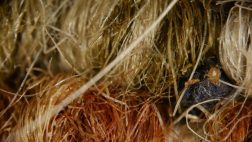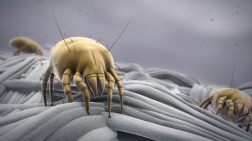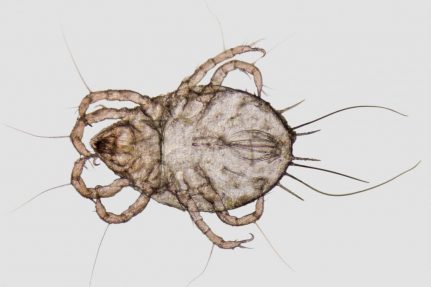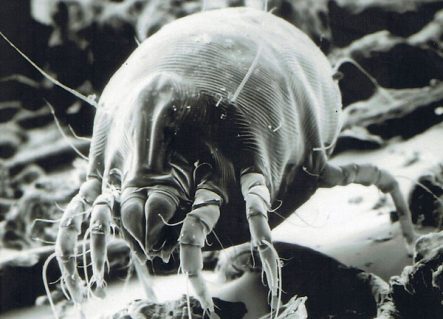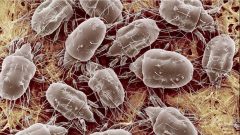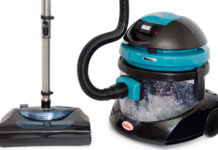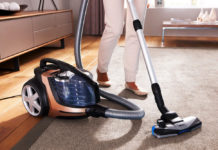Being in almost any environment, a person is surrounded by a wide variety of microorganisms. Moreover, some of them are concentrated in his home and is by no means useful to the body. One of these harmful "neighbors" are dust mites.
Material Content:
What is a dust mite and why is it dangerous?
Dust mites are creatures with many alternative names. So, in common people they are called anthers, while in science they are known under the name Dermatofogoides of the genus Farine (the term formed the basis of the name - the Farin tick). Parasites resemble tiny arachnids. The length of their bodies is 0.1-0.5 mm. To see such pests is possible only with a microscope.
Dust mites have a repellent appearance. Their body is equipped with four pairs of limbs with suction cups and as if smeared with a water-repellent layer. That is why they easily slip through water droplets and wash them during cleaning with a really exclusively soapy solution.
Ticks accompany a person living in his home, not one thousand years. Modern science has about 150 varieties of these creatures.
Note. Dust mites are divided into subspecies: barn, predatory (these feed on barn) and random (listed in the dwelling from the outside).
The age of ticks is short-lived: it lives 65-80 days. During her life, the female lays about 300 eggs. The population of microscopic individuals, thus, grows with astonishing speed. Dust mites multiply rapidly within apartments: the local temperature (22-26 ° C) and humidity are excellent conditions for the emergence of new individuals at home.
Many people are sure that anthers bite, simultaneously affecting the body with substances that provoke various diseases. In fact, dust mite bites do not threaten people: parasites are not able to inflict mechanical damage on humans. As a result of the laying off of feces and other products of their vital activity, ticks become the culprits of food, contact or respiratory allergies.
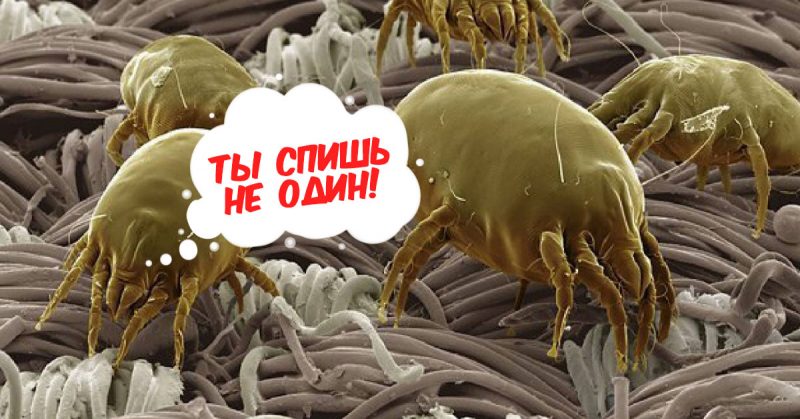
These microscopic creatures in small quantities are not considered dangerous. Their concentration is less than 100 pcs. per 1 g of dust is recognized as harmless. Higher rates can trigger an asthma attack, and 1000-2000 individuals per 1 g of dust can cause a chronic allergy to a dust mite, accompanied by a runny nose.
How to detect unwanted guests in the house
Dust mites are often wound up in the following places:
- bed, bedding, mattresses, pillows;
- Stuffed Toys;
- curtains;
- Carpets
- furniture upholstery;
- old clothes, books, magazines.
You can track dust mites in the house by observing the health of the household. Certain symptoms will help identify the extent of home damage by these pests.
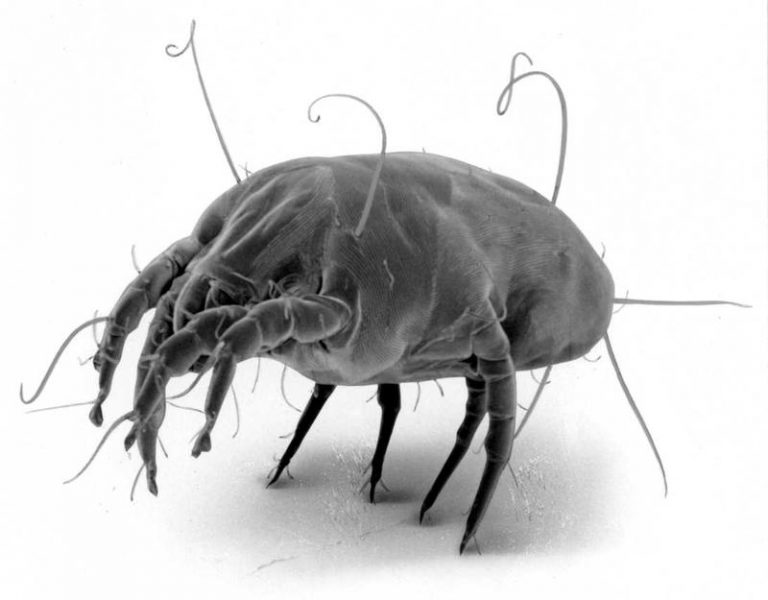
Tick Allergy Symptoms
The main signs indicating the proximity of a dust mite include:
- nasal congestion, discharge from it;
- dry cough, sometimes accompanied by wheezing;
- lacrimation, irritation of the mucous membranes;
- frequent sneezing
- frequent awakenings at night due to shortness of breath;
- affected skin (burning, rash, itching, etc.).
It is likely that the cause of all these ailments is an allergy to a home dust mite. In these cases, it makes sense to go to the doctor for a diagnosis and get recommendations for getting rid of allergy symptoms.
Ways to get rid of parasites in the apartment
When planning to fight a dust mite, it should be noted that it is unlikely that parasites can be completely removed from the expanses of the home. You can only significantly reduce the number of pests, making them harmless to the body.

Effective tick control methods recognized:
- Thorough cleaning of all rooms. Ticks cannot exist in a “dustless” room.
- Ventilation. In this case, not only rooms should be exposed to air, but also things - bedding, toys, etc. A good way is to freeze a house or apartment in the winter. Under the influence of low or high temperatures, a huge percentage of ticks die.
- Exposure to sunlight. Under direct ultraviolet radiation, adults and tick eggs die. It is enough to take out carpets, blankets, mattresses and other objects onto which pests accumulate.
- Elimination of "dust collectors". You should completely abandon objects that attract dust. These include decorative pillows, blackout curtains, numerous figurines, figures, picture frames and more.
- The use of a high-quality vacuum cleaner, including a washing one. The device must be equipped with a special filter that destroys parasites during cleaning. It is also useful to vacuum and mop the floors daily.
- Revision and, if possible, replacement of bed linen, floor coverings. Natural bedspreads and carpets, as well as down pillows, are an excellent habitat for ticks to reproduce.
- Removing all unnecessary things from home, avoiding the accumulation of trash.
- Washing bedding or toys at a temperature of 60 degrees, followed by ironing with a hot iron.
If animals live at home, you should pay attention to a number of recommendations:
- Wipe the surface of the animal’s coat after walking with a clean damp cloth.
- Weekly change the litter of the animal.
- Keep pets out of the bedroom and bed.
Mite Control Chemicals
It is interesting:lice - how to get rid of at home
The modern chemical industry offers many ways to combat domestic parasites. You can get rid of dust mites using the following chemical-based products:
- Acaril;
- X-mite
- Allergoff;
- Easy Air et al.
Preventative precautions
For a complete and effective prevention of the appearance of a dust mite, one should adhere to some recommendations:
- To make the situation in the house as mono more concise: a minimum of carpets, upholstery in leatherette and similar materials, and an easy-to-clean floor.
- To get some houseplants that help in the fight against parasites.
- Replace pillows and duvets made of down or feathers with synthetic fillers. Change the mattress and pillows every few years.
- Remove high-pile carpets and soft toys from your home, or wash them regularly at high temperatures.
- Do not furnish the house with objects that attract dust.
- Do not store things under the bed or in the closet - in these places dust often accumulates most often.
- Do not have a computer and other equipment in the bedroom - dust accumulates most actively on electrical appliances, and removing it is quite problematic.
- All necessary items should be packed in bags and hidden in lockers.
- Wipe surfaces regularly (at least once every two days).
- In the process of cleaning should work in a gauze bandage. This protects the airways from volatile allergens.
A mite that accumulates in ordinary house dust can cause severe allergies in humans. This phenomenon can be prevented by taking measures to prevent a large accumulation of these parasites. Systematic cleaning and airing of rooms, lack of clutter and timely processing of clothes, furniture, floor coverings will greatly facilitate this task.


